Here is the sightings report for the period of April 11-22. After all migration was completely halted due to winter-like conditions for the first half of April, a powerful warm front finally got birds moving again and there were several days that migrant birds, particularly hawks and cranes flooded over Whitefish Point. The Waterbird Count began on April 15th to open water and migrating ducks.
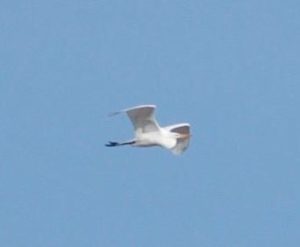
Great Egret by Alec Lindsay
Canada Geese had a few decent flight days with 214 seen on the 17th and 423 on the 18th. Rare for Whitefish Point were 4 Trumpeter Swans on the 15th; this species has been increasing in the Upper Peninsula and sightings at Whitefish are expected to occur more often. Most of the dabbling ducks have been recorded including American Wigeon, Gadwall, Green-winged Teal and Northern Pintail with a good day count of 66 Pintail on the 18th. With a season total of 117 Northern Pintail recorded, this species is already at its 3rd highest ever season total! Small numbers of Redhead, Ring-necked Duck and both scaup have been recorded this week and a pair of Long-tailed Ducks were observed on the 18th. Both Bufflehead and Goldeneye have been recorded as have all three merganser species, with a good total of 66 Common Mergansers on the 18th.
Common Loons have started to trickle by with 1-5 birds seen near daily. The first Red-throated Loons were observed on the 18th, and a flock of 4 seen on the 22nd. One Horned Grebe was seen on the 17th and there have been a few Red-necked Grebes most days. Rare to Whitefish Point and the first since spring 2012, was a Great Egret spotted by Dr. Alec Lindsay and his NMU Ornithology class on the 16th. Shorebirds have been few, with Killdeer and Greater Yellowlegs most days and a couple Lesser Yellowlegs observed. Early for Whitefish Point and Lake Superior were 2 Caspian Terns on the 18th.
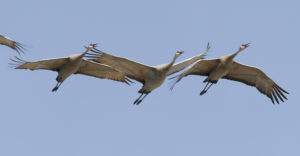
Sandhill Cranes by Ted Keyel
Sandhill Cranes migrated by this last week in unprecedented numbers. There was a five day stretch when one to four thousand cranes were counted daily with a peak of 4,916 Sandhill Cranes recorded on the 16th! This single day high count exceeds the previous high season count was 4,446 and the seasonal average is 820. So far we have tallied 15,103, a most significant increase! Most days, many of the birds crossed to Canada, notable as cranes are often reluctant to cross large bodies of water.
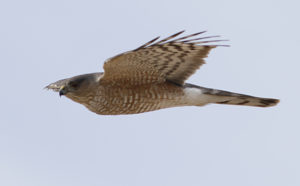
Sharp-shinned Hawk by Ted Keyel
Hawk migration has been fantastic during this period! Waves of raptors washed over for several days in a row. Sharp-shinned Hawk numbers jumped from 19 on the 13th, to 224 the next day. These numbers would continue to grow peaking with 1,504 on the 16th. The 15th had one of the more spectacular Northern Harrier (204) and Rough-legged Hawk (118) flights I have seen in a long time. Both Northern Goshawk (5) and Red-shouldered Hawk (3) were peak counts on the 16th, and Red-tailed Hawks have had a good few days with a peak of 215 on the 17th. Several dark morph birds have been seen this year. Osprey and Peregrine Falcon were first seen on the 15th and the first Broad-winged Hawk on the 18th.
Owl migration mirrored the diurnal raptors with a big push of Northern Saw-whet Owls and Long-eared Owls. 165 Northern Saw-whets and 149 Long-eared Owls have been banded so far, and evening lift-off of Long-eared Owls was particularly good the weekend of the 15-17th with a peak of 14 seen on the 15th.
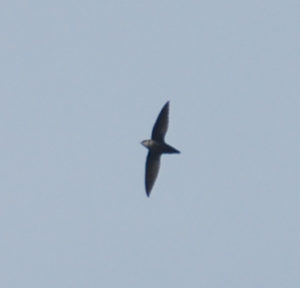
Chimney Swift by Skye Haas
Surprisingly early was a Chimney Swift on the 20th, this species has just started to arrive in the lower Great Lakes and arrival to the UP is typically in May. The first Yellow-bellied Sapsucker was seen on the 15th and there were several days of good Northern Flicker migration with a peak of 117 on the 17th. The first Horned Lark, Tree Swallows and Eastern Bluebirds were seen on the 15th as well as a large American Robin flight with 517 birds record. The first Barn Swallow and Lapland Longspur were on the 16th. Ruby-crowned Kinglets and Hermit Thrushes migrated in on the 18th. Rather early but expected annually was a Northern Mockingbird on the 18th. Bohemian Waxwings are still trickling by in small numbers. Small numbers of Yellow-rumped Warblers have been seen and the first Pine Warbler was seen on the 16th, and an early Palm Warbler on the 20th.
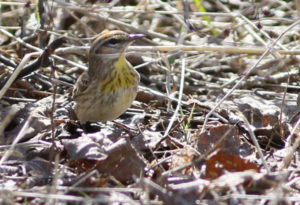
Palm Warbler by Ted Keyel
A few new sparrows have showed up with Chipping Sparrow on the 18th, White-throated Sparrow on the 20th, and Savannah Sparrow on the 21st. Good flights of various blackbird species have occurred on many mornings and peak flight include 161 Red-winged Blackbirds on the 17th, 107 Rusty Blackbirds, 430 Common Grackles and 74 Brown-headed Cowbirds on the 16th. Two goodies were a female Yellow-headed Blackbird on the 14th, and a Brewer’s Blackbird on the 17th. A few Meadowlarks have been observed, most of which were identified as Easterns.
The Common Redpolls have quickly disappeared in the last week with the last sighting of a Hoary Redpoll being on the 15th. Pine Siskins and Red Crossbills are still being seen, and Purple Finches have really ramped up with 69 seen on the 17th. Amazingly no American Goldfinches have been seen yet this season.
Good birding,
Skye Haas
WPBO Field Ornithologist
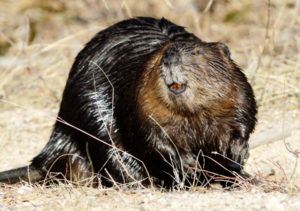
Beaver

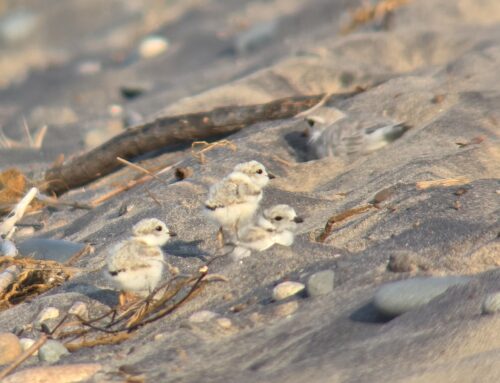
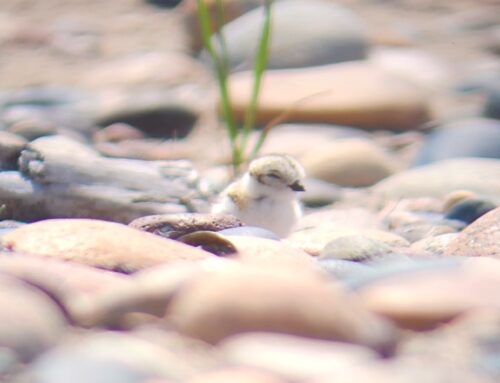
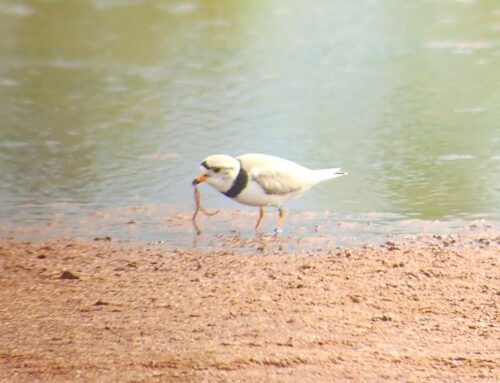
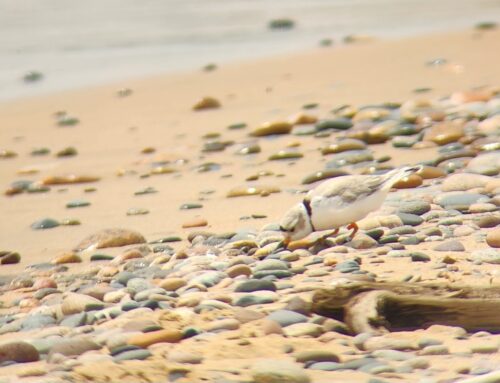
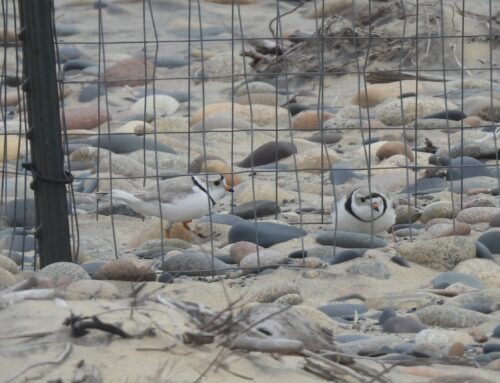
Wow! Thanks for the great report, Skye!
Good report! Almost as good as being there myself!
Hi,
I am from Grand Rapids, MI and will be up to Boyne City this upcoming weekend (April 30, May 1).
I am wondering if it will be worth out time to drive the 2 1/2 hours further north to Whitefish to see the migration? Have most of the owls, cranes, hawks, already passed?
Thank you,
Nancy